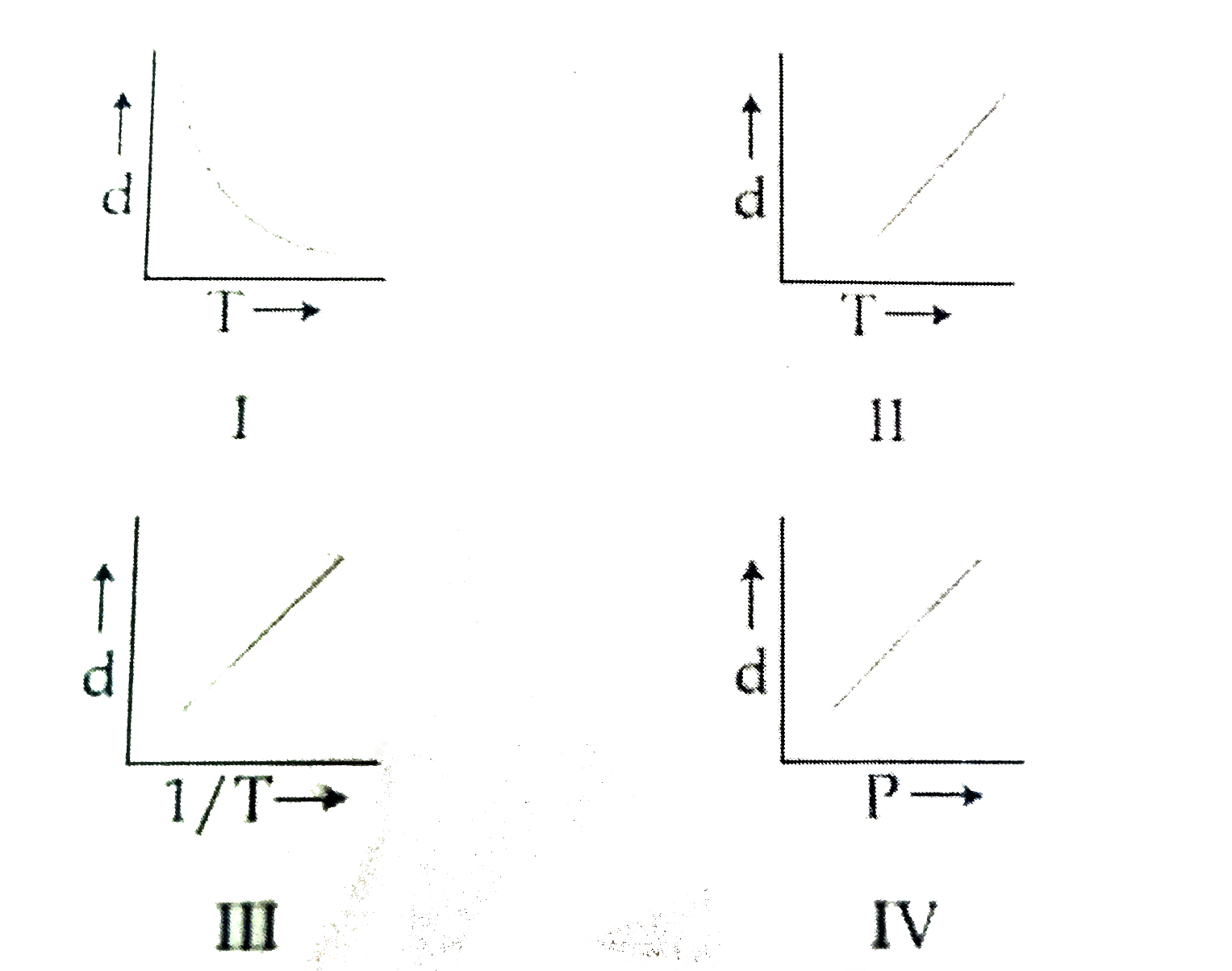At a temperature T,K, the pressure of 4.0gm argon in a bulb is P. The bulb is put in a bath having temperature higher by 50K than the first one 0.8 of argon gas had to be removed to maintain original pressure. The temperature T is
510K
200K
100K
73K
The correct Answer is:B
To solve the problem, we will use the ideal gas law and the relationship between the number of moles, temperature, and pressure. Here’s the step-by-step solution:
Step 1: Understand the Ideal Gas Law
The ideal gas law is given by the equation:
PV=nRT
Where:
- P = Pressure
- V = Volume
- n = Number of moles
- R = Ideal gas constant
- T = Temperature in Kelvin
Since the pressure and volume are constant, we can relate the number of moles and temperature.
Step 2: Establish the Relationship
If pressure P and volume V are constant, we can say:
n1T1=n2T2
Where:
- n1 and T1 are the initial number of moles and temperature.
- n2 and T2 are the final number of moles and temperature.
Step 3: Calculate Initial Moles
The initial mass of argon is given as 4.0 g. The molar mass of argon (Ar) is approximately 40 g/mol. Therefore, the initial number of moles n1 can be calculated as:
n1=m1M=4.0g40g/mol=0.1mol
Step 4: Determine Final Moles
After removing 0.8 g of argon, the final mass m2 is:
m2=4.0g−0.8g=3.2g
Now, calculate the final number of moles n2:
n2=m2M=3.2g40g/mol=0.08mol
Step 5: Set Up the Equation
Now we can set up the equation using the relationship established earlier:
n1T1=n2T2
Substituting the known values:
(0.1mol)(T)=(0.08mol)(T+50)
Step 6: Solve for Temperature T
Expanding the equation gives:
0.1T=0.08T+4
Now, isolate T:
0.1T−0.08T=4
0.02T=4
T=40.02=200K
Final Answer
The temperature T is:
T=200K
---
The ideal gas law is given by the equation:
PV=nRT
Where:
- P = Pressure
- V = Volume
- n = Number of moles
- R = Ideal gas constant
- T = Temperature in Kelvin
If pressure P and volume V are constant, we can say:
n1T1=n2T2
Where:
- n1 and T1 are the initial number of moles and temperature.
- n2 and T2 are the final number of moles and temperature.
The initial mass of argon is given as 4.0 g. The molar mass of argon (Ar) is approximately 40 g/mol. Therefore, the initial number of moles n1 can be calculated as:
n1=m1M=4.0g40g/mol=0.1mol
After removing 0.8 g of argon, the final mass m2 is:
m2=4.0g−0.8g=3.2g
Now, calculate the final number of moles n2:
n2=m2M=3.2g40g/mol=0.08mol
Now we can set up the equation using the relationship established earlier:
n1T1=n2T2
Substituting the known values:
(0.1mol)(T)=(0.08mol)(T+50)
Expanding the equation gives:
0.1T=0.08T+4
Now, isolate T:
0.1T−0.08T=4
0.02T=4
T=40.02=200K
The temperature T is:
T=200K
Topper's Solved these Questions
- STATES OF MATTERBOOK - VMC MODULES ENGLISHCHAPTER - STATES OF MATTEREXERCISE - IMPECCABLE
50 Videos
- STATES OF MATTERBOOK - VMC MODULES ENGLISHCHAPTER - STATES OF MATTEREXERCISE - ENABLE
50 Videos
- SOME BASIC CONCEPTS OF CHEMISTRYBOOK - VMC MODULES ENGLISHCHAPTER - SOME BASIC CONCEPTS OF CHEMISTRYEXERCISE - IN - CHAPTER EXERCISE - H
8 Videos
- STATES OF MATTERBOOK - VMC MODULES ENGLISHCHAPTER - STATES OF MATTEREXERCISE - IN-CHAPTER EXERCISE-I
10 Videos
Similar Questions
At a temperature T K, the pressure of 4.0g argon in a bulb is p. The bulb is put in a bath having temperature higher by 50K than the first one 0.8g of argon gas had to be removed to maintained original pressure. The temperature T is equal to
View Solution4.0g of argon gas has pressure P and temperature TK in a vessel. On keeping the vessel at 50∘C higher, 0.8g of argon was given out to maintain the pressure at P. The original temperature was ____×10−2K.
View Solution
Knowledge Check
For an ideal gas, number of moles per litre in terms of its pressure P, gas constant R and temperature T is
APT / RBP / RTCPRTDRT / P
4 g of an ideal gass (Vapour dencity=20) is taken in a bulb of 10dm3volume at a temperature of T K. The bulb is placed in a thermostat maintained at a temperature 125°C more than the initial. To maintain original pressure, 0.8 g of gas has to be removed, then the value of T is
View Solution4gof an ideal has (vapourdensely=20) is taken in abulbe od 10dm3 volume, at a temperature ofT K.The bulb is present on thermostat maintained at a temperature 125°C more than the initial. To maintain original pressure, 0.8 g of gas has to be removed, then the value of T is
View SolutionPressure of a gas at S.T.P. is doubled and the temperature is raised to 546 K. What is the final volume of the gas ?
View SolutionThe pressure of a gas filled in the bulb of a constant volume gas thermometer at temperatures 0°Cand100°C are 27.50 cm and 37.50 cm of Hg respectively. At an unknown temperature the pressure is 32.45 cm of Hg. Unknown temperature is -
View Solution300K a gas (γ=5/3) is compressed adiabatically so that its pressure becomes 1/8 of the original pressure. The final temperature of the gas is :
View SolutionA container contains 32 g of O2 at a temperature T. The pressure of the gas is P. An identical container containing 4 g of H2 at a temperature 2T has a pressure of
View Solutionwhich one of the following graph is not correct for ideal gas ?

d=density ,P=pressure,T=Temperature
View Solution
